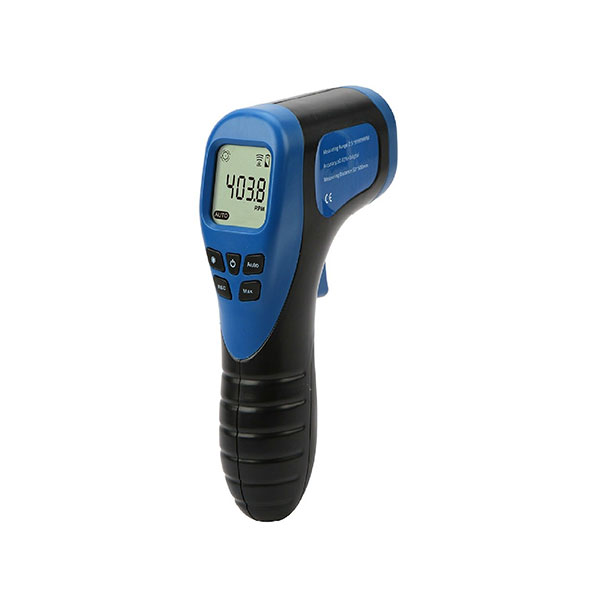How to Select the Right Tachometer for Your Automobile or Motorcycle
The Importance of a Tachometer in Checking Engine Speed and Efficiency in Automotive Applications
In the realm of automobile engineering, the tachometer stands as an essential tool in the driver's arsenal, offering a direct window into the inner functions of an automobile's engine. Past its feature as a plain scale of revolutions per minute (RPM), the tachometer serves as an important device for lovers and specialists alike, supplying real-time understandings right into engine efficiency and wellness.
Relevance of Monitoring Engine RPM
Keeping track of engine RPM, or transformations per minute, is an important facet of automotive maintenance and efficiency evaluation. Engine RPM directly correlates with the speed at which the engine's crankshaft rotates, indicating exactly how promptly the engine is running - tachometer. By monitoring RPM, mechanics can assess the health of the engine, spot prospective issues, and fine-tune efficiency. An abnormal RPM analysis might signify troubles such as engine misfires, malfunctioning ignition system, or issues with the fuel delivery system. Consistently high RPM analyses can show aggressive driving habits or the need for a higher equipment change to enhance fuel efficiency.
Furthermore, checking engine RPM is important for performance examination in racing and high-performance cars. Maintaining optimal RPM levels is vital for accomplishing peak power outcome and acceleration. Racers typically use tachometers to ensure they are running within the ideal RPM array for optimum performance. In summary, monitoring engine RPM is not only essential for finding issues yet additionally for optimizing engine performance in numerous automotive applications.

Benefits of Real-Time Data
In vehicle applications, real-time information plays a crucial role in providing instant insights into the performance and condition of the car. By constantly keeping an eye on numerous specifications such as engine rate, temperature level, fuel usage, and much more, real-time data provides various benefits that add to enhanced efficiency and safety on the road.
In addition, real-time data facilitates performance optimization by giving prompt comments on driving routines and engine performance. Drivers can readjust their actions in real-time based on this information to achieve far better gas economic situation and lengthen the life-span of their vehicle.

Furthermore, real-time data plays an essential role in modern-day automotive diagnostics, making it possible for specialists to promptly diagnose and attend to breakdowns. This results in lowered downtime, lower maintenance prices, and eventually, boosted overall automobile reliability and longevity (tachometer). By taking advantage of the power of real-time information, automobile stakeholders can make educated choices that favorably impact both the performance and durability of the lorry
Effect On Equipment Shifts
The tachometer plays a critical role in optimizing gear shifts by providing real-time engine rate information to the vehicle driver. When coming close to the redline on the tachometer, it signifies the vehicle driver to upshift to protect against over-revving the engine and creating possible damage.
Furthermore, the tachometer aids in achieving smoother gear changes, specifically in hand-operated transmissions. By monitoring engine rate, drivers can execute gear changes go now at the ideal RPM variety, decreasing jerking activities and decreasing endure the transmission elements. This precision on duty changes not just improves driving comfort however also adds to sustain efficiency.
Enhancing Gas Effectiveness
Provided the crucial role the tachometer plays in maximizing equipment shifts for efficiency and engine wellness, it directly adds to taking full advantage of gas effectiveness in automobile applications. By offering real-time responses on engine rate, the tachometer aids drivers in preserving one of the most reliable RPM range for fuel economic situation. When drivers continually keep an eye on the tachometer and readjust their motoring habits appropriately, they can prevent unneeded gas intake triggered by over-revving or hauling the engine.
Moreover, the tachometer assists chauffeurs identify the most fuel-efficient equipment to be in at any given minute, avoiding the engine from working more challenging than essential. This is especially critical during velocity and travelling, where being in the best equipment can considerably affect gas efficiency. Furthermore, the tachometer can inform drivers to prospective mechanical problems that can be adversely affecting fuel economic climate, such as a sliding clutch or a clogged up air filter. To conclude, the tachometer acts as a useful device in boosting fuel efficiency by promoting ideal driving routines and determining locations for renovation in the lorry's performance.

Optimizing Engine Durability
The tachometer's function in keeping an eye on engine speed and performance is crucial in guaranteeing the long life of automobile engines. Keeping track of the tachometer permits check this site out motorists to stay within the advised RPM variety for their lorry, stopping unneeded strain on the engine and expanding its lifespan.

Conclusion
Finally, the tachometer plays a vital role in checking engine speed and efficiency in automobile applications. By you can check here giving real-time data on RPM, it permits effective gear shifts, enhanced fuel performance, and optimized engine longevity. This device is important for keeping optimal engine performance and making certain the general capability of a car.